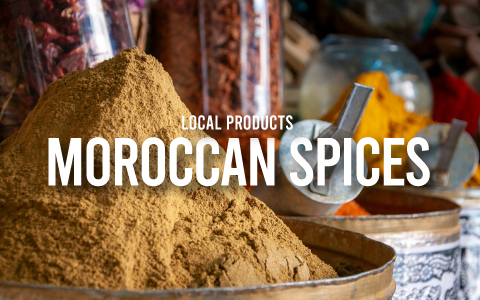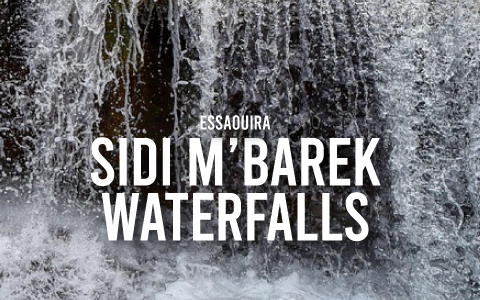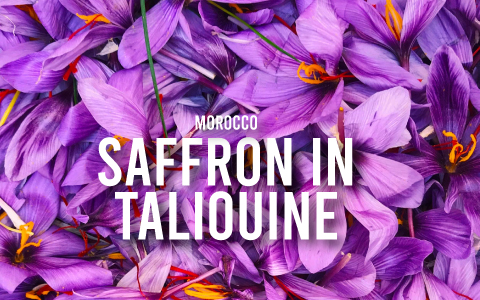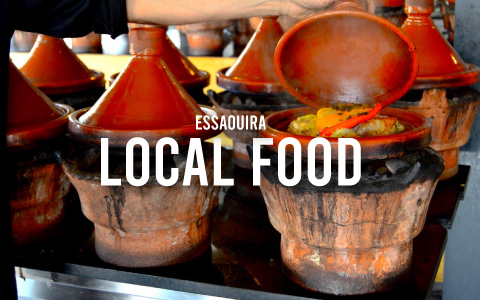
Exploring the Spice Soul of Marrakesh
Marrakesh is a city that hums with color, sound, and also scent. The moment you step into the ochre-hued Medina, it begins to reveal its many layers: the rhythmic calls of merchants, the clinking of brass in the souks, the distant melody of prayer echoing from the Koutoubia Mosque. You might wander through the tranquil courtyards of the Bahia Palace or find yourself in the shadow of the Saadian Tombs. Yet no matter where you go, the air itself seems alive with the fragrance of its spice market.
A City Built on the Spice Trade
The story of Marrakesh is, in many ways, the story of spices.
Founded in the 11th century by the Almoravid dynasty, the town quickly became a crossroads of commerce between the Saharan caravans and the great Mediterranean ports. Long before European explorers charted new sea routes, camel caravans were already threading their way through the desert, carrying gold, ivory, salt. And spices.
These were not just culinary treasures but objects of power and prestige. Cardamom from India, pepper from the East, and saffron from Persia passed through Marrakesh on their way to North Africa and Europe. The aromas that waft through the Medina today are echoes of those ancient journeys.
However, the spice trade didn’t only enrich Marrakesh economically. It also left a deep imprint on its identity, cuisine, and rhythm of life. When you taste a tagine perfumed with cinnamon and dried apricots, or couscous laced with cumin and saffron, you are tasting history.
Where to Buy Spices in Marrakesh
If there’s one place that embodies the spice soul of Marrakesh, it’s the Rahba Kedima, also known as the Spice Square. Tucked inside the labyrinth of the Medina this open-air market is a feast for the senses. Here, spices are displayed in vivid pyramids — turmeric like powdered gold, paprika in fiery reds, and the pale, sun-baked hue of ginger. The air is heavy with the perfume of cumin, cloves, and dried rose petals.
Some stalls are little more than wooden tables covered in burlap sacks, while others are elegant boutiques stacked floor-to-ceiling with glass jars of powders and herbs. Vendors call out in French, Arabic, and English, offering samples and explanations. Beyond the main square, smaller herboristeries (traditional herbal shops) line the narrow alleys. These are worth seeking out for both the quality of their products and the knowledge of their owners. Some, like Herboristerie Lamlih or Abdelkader’s Spice Shop, have been run by the same families for generations. Step inside, and you’ll find yourself surrounded by shelves of dried herbs, glass jars of argan oil, amber crystals, henna powders, and strange roots whose names you may never have heard before.
What Spices to Buy in Marrakesh
Choosing spices in Marrakesh can feel overwhelming at first, but it’s part of the adventure. Each aroma has its own story to tell.
Start with ras el hanout, the heart of Moroccan flavor. No two blends are identical since each shopkeeper has their own secret formula, often containing over twenty ingredients. Some include nutmeg, mace, rosebuds, dried lavender, or galangal. It’s used in everything from couscous to slow-cooked tagines, giving them their unmistakable complexity.
Then there’s cumin, the undisputed king of Moroccan cooking. Its warm, nutty flavor defines many local dishes, from lentil soups to grilled meats. Locals often carry a small pouch of ground cumin to sprinkle over street food or even to soothe a stomach ache.
Turmeric brings color and health; ginger adds warmth and spice to sweet and savory recipes alike; cinnamon lends its perfume to tagines with lamb, almonds, and prunes. Paprika, both sweet and smoky, is often used in fish dishes, especially along the coast. And of course, there’s saffron, Morocco’s “red gold,” cultivated in the small town of Taliouine in the Atlas Mountains. It’s expensive, but the quality is exceptional. Real saffron threads are deep crimson and release a floral aroma when soaked in warm water. Be cautious of cheap imitations sold in plastic sachets — genuine saffron deserves its price.
You might also want to pick up black cumin, sesame seeds, dried rosebuds, or orange-blossom water which are staples in Moroccan kitchens and pastries. And don’t forget a jar of argan oil, prized not only for skincare but as a rich, nutty oil for drizzling over salads and couscous.
Spice-Inspired Experiences in Marrakesh
Why limit yourself to shopping for spices when you can experience them in a deeper way?
For example, you could join a Moroccan cooking class. Many riads and culinary schools in Marrakesh offer half-day courses that begin with a guided visit to the spice market. You’ll learn how to choose ingredients, grind spices by hand, and prepare traditional Moroccan dishes. The experience is as much about storytelling as it is about cooking.
Not interested in cooking? Well, visit the Jemaa el-Fnaa square at sunset. As the sky turns orange, the square fills with food stalls, each perfumed with spices. The smoke from grilling meats mingles with the sweetness of pastries and the scent of orange blossoms carried by the wind. You can simply smell the spices or taste whatever catches your eye.
Then, you should definitely explore Marrakesh’s herbal medicine culture. Traditional healers and herborists often prepare blends for well-being: mixtures of verbena and thyme for digestion, anise and fennel for relaxation, or amber and musk for perfume.
For something different, head outside the city to a cooperative in the Ourika Valley, where women produce argan oil by hand. Watching them crack the nuts, grind the kernels, and extract the oil is a lesson in patience and precision and a chance to see how spices and oils connect to Morocco’s agricultural roots. Oh and don’t forget the tree climbing goats!
Beyond Marrakesh: Other Spice Destinations in Morocco
While Marrakesh is the undisputed capital of Morocco’s spice culture, it’s far from the only place to explore. Each region has its own specialties, shaped by geography and tradition.
In Essaouira, the ocean breeze meets the scent of cumin and paprika. The coastal city’s markets are smaller and more relaxed than Marrakesh’s, but they specialize in spices used for seafood and in argan-based products.
Travel north to Fez, Morocco’s spiritual and intellectual heart, and you’ll find spice markets intertwined with the city’s ancient tanneries and dyeing workshops. Here, saffron, turmeric, and indigo mingle in the air, reflecting the city’s craftsmanship and centuries-old trade routes.
And if you venture to the already mentioned Taliouine, nestled between the High Atlas and the Anti-Atlas, you can visit the fields where Morocco’s best saffron is grown. In late October, the fields bloom in violet and gold — a once-a-year spectacle that reminds you how delicate and precious this spice really is.



